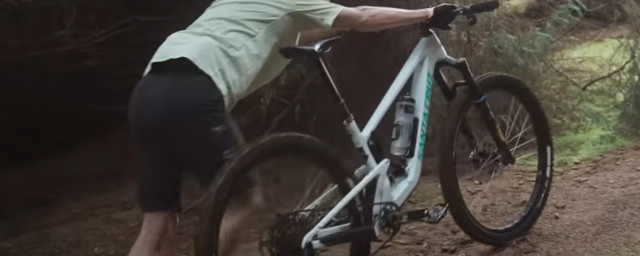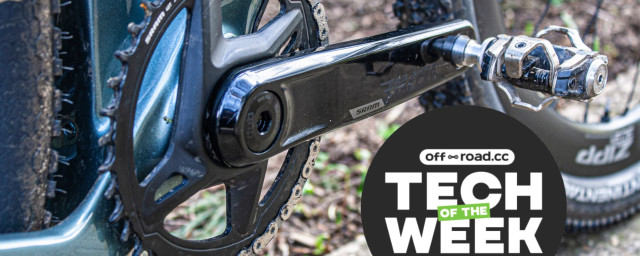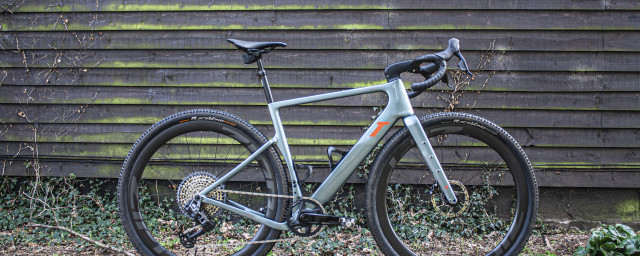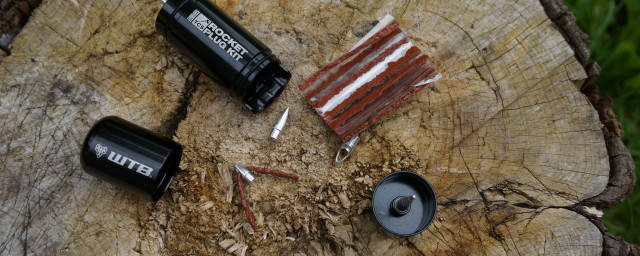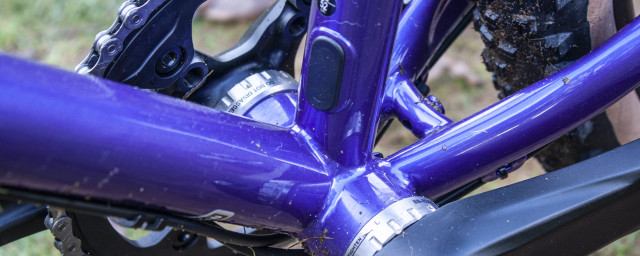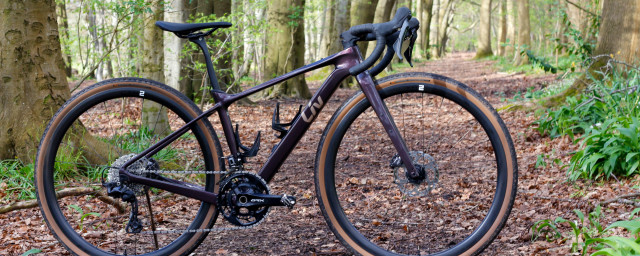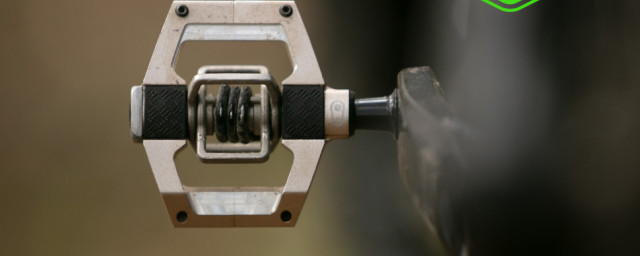Liv Cycling is the female portion of the brand Giant, as you might imagine they produce female specific bikes, catering for all sectors of the market. Rachael recently headed out to South Tyrol in the Italian Alps to ride their first women’s specific e-bike the Liv Vall E+, a hardtail e-bike with plus sized tyres. Liv say this bike is aimed at riders wishing to broaden their off-road horizons, keep up with a faster group of friends or make a return to riding after illness or injury.
- First Ride: Lapierre's new Overvolt iShimano Electric MTB
- Read our buyers guide to E-mountain bikes here
Liv’s target market for the Vall E+ range is a rider that wants a bike to get around faster, a bike that enables her to go out for longer without the fatigue a normal bike would bring. She wants to efficiently keep up with her partner whether this physical difference is through fitness, illness or injury. Liv have based the Vall E+ on their ‘recreation’ hardtail, the Liv Tempt, which they say is their best selling ladies bike. The Vall E+ series follows in the footsteps of the unisex e-bikes in Giant’s range but this time with geometry and specification designed solely by Liv.
Spec and Build
I rode a medium sized Vall E+ Pro (the top spec bike) in and around the valleys of Laces in South Tyrol, the notion of ‘valley’s’ providing the namesake for the Vall E+ range. It is a bike which uses Giant’s Sync Drive Pro motor (powered by Yamaha) and Giant’s EnergyPak, a 500Wh integrated battery. The bike is specced with capable 120mm Rockshox Revelation 35 forks, reliable Shimano Deore brakes with 200mm disc at the front and 180mm at the rear. The bike offers a smooth changing XT mech, 34T chainring and an 11 speed 11-46T cassette at the rear. Cockpit wise the Vall E+ is all branded Giant gear, a Giant 100mm dropper post, 730mm wide bars, 60mm stem, 35mm rims with Maxxis 2.6 inch tyres (Recon front and Forekaster rear). All that sits pretty well in the price bracket of 3,600 Euro (UK pricing available soon) when compared to other brands offerings in the female specific department.
The Vall E+ will come to the UK in two specs but unfortunately not the one above! The bikes we will see in the UK will have 100mm Suntour Radian forks and a 10 speed drive-train or 100mm Suntour XCR forks and nine speed, priced at 2,699 and 2,299 Euros respectively. Disappointingly, I can’t give you the weight of the bike as Liv could not provide the details and say they usually direct customers to local dealers for this information. I should add, this is nothing new by Giant, they’ve always done this for as long as I can remember, it still frustrates me though!
The Motor
Jumping aboard the Vall E+ Pro was as fun as it always is swinging a leg over an e-bike, it’s an awesome formidable feeling as if you can own the mountains and climb like your favourite Tour de France champ. From the off it was clear that the power delivery from the Yamaha powered Sync Drive Pro motor was to be smooth with no lag on the offset. Liv say that this motor is tuned to deliver 100% of the 80Nm of torque in less than 190 milliseconds, the power was instant and felt predictable. Liv uses something called PedalPlus 4-sensor technology which uses input from speed, torque, motor rpm and pedal rpm to produce consistent power across the entire gear range.
The system delivers power in 5 modes; Eco, Tour, Active, Sport and Power with each one increasing the input support in comparison to your pedal inputs. For example, in Eco the support available is 100% and in Power mode this increases to 360%. I found that for basic climbing with fresh legs Eco mode was adequate to get me spinning along at a lot higher speeds and with drastically less effort than would be expected without the assistance. I bumped this up to Active or Tour for pinch climbs depending on severity. The control buttons on the left-hand side of the bars are easy to reach and I was able to change mode without looking down at them when going uphill and down. The display in the centre of the bars was easy to read at a glance too and nice and bright even in the midday glare of the sun. For those parts of the trail where pushing is required, the Vall E+ features walk assist which delivers more power incrementally in each of the modes.
The upper two modes were only useful on less rough gravel or tarmac climbs during a smooth delivery of power and where the chance of lack of traction over bumps and therefore wheel spin was lessened. Liv say the battery lasts on average 5 hours but of course this all depends on external factors such as mode used and weight of rider. I spent about 3 hours riding the Vall E+ on both days of the launch and still retained 50% of the battery life at the end of this time.
The Ride
Climbing on the Vall E+ was predictable, it was easy to temper my pedal strokes and feel the motor respond accordingly. Whilst riding on a fair gradient the Vall E+ climbs well enough but this has to be attributed to the pedal assistance gained from the motor. This bike has a 73 degree seat angle which is relatively slack, but in line with what you would likely see on a majority of hardtail bikes and as such, climbing without the motor, would likely have seen me unimpressed by its climbing prowess. The reach figure of the Vall E+ comes in at 390mm for my medium sample and this coupled with a long head tube (135mm) made for an upright riding position. To enable me to get more weight over the front I took out all four of the spacers Liv had inserted under the stem, this adjustment allowed me to have more say on the traction of the front wheel on steep or technical climbs. The presence of long chain stays (475mm) and the motors assistance enabled me to pitch the Vall E+ at some pretty serious uphill alpine routes. With the target market of this bike in mind, it will dispatch fire road climbs and trail centre routes with ease with little complaint from the rider.
When I turned things downhill I put the Vall E+ into Eco mode, this was the optimum choice of power assistance when gravity is helping the cause, resulting in a steady and unsurprising input from the motor should you need a crank or two. We tackled some pretty technical singletrack descents aboard a bike without the travel or the geometry to really allow such behaviour normally. The Rockshox Revelation forks with their new, stiffer 35mm chassis borrowed from their bigger brother the Pike, handled the rough terrain in a composed manner given the weight behind this bike, although I did run the forks at a slightly higher pressure than I would given a standard bike to prevent them diving on steeper descents. The short front centre and upright nature gave the bike a feeling of two halves, the front end with its 68 degree head angle, meant the front wheel was quick to react and turn whilst at the rear the long chain stays (475mm) coupled with the weight of the motor gave the bike a feeling of laziness behind the rider. The bike proved an effort to steer with the rear and the length of the chain stays made tighter corners difficult. In my opinion, this is due to the mismatch of front and rear centre lengths, I prefer a longer chainstay, but only when coupled to a longer front end, having it the other way round felt slightly odd.
The longer chain stays coupled with a relatively low bottom bracket (BB drop of -58mm) did, however, prevent the bike from feeling too unstable whilst riding over fast or bumpy terrain in a straight line. This coupled with the high front end encouraged a riding position favouring the rear of the bike, the short reach and front centre seeing to it that if you took a more forward position you felt pitched over the front wheel with the bars nearer to you than you might like. Interestingly, Liv say that they notice that women tend to ride more towards the rear of the bike and have therefore design bikes to suit this riding style. I know this is a position I adopted in my early days of riding as a safety mechanism for steep terrain, so where this fact is probably true it’s not the most beneficial thing to encourage of new riders, riding ‘off the back’ will ultimately end in less front wheel traction and prevent a rider progressing.
Something that will benefit the riders buying this bike is the choice of 2.6” tyres and 35mm wide (internal) rims, a good match in terms of tyre and rim widths to prevent any tyre rolling. The combination made for a comfortable ride and a massive amount of grip when climbing allowing the most amount of traction and maximising the forward momentum. The ‘nearly plus’ tyres are confidence inspiring when descending, smoothing out small bumps and again, amplifying grip levels, they allow this bike to be ridden harder than it might on a narrower tyre set up.
With the bikes that the UK market will be receiving in mind, the Liv Vall E+ 1 and 2 will be adequate trail machines for the customers Liv are targeting. Whilst the Revelation forks of the top spec bike were a worthwhile addition for the terrain we rode, for the majority of trails these bikes are likely to hit up, a fork such as this is a luxury. The steep head angle, long rear end and potentially the desire of the rider will keep this bike within its limits. Liv are honest in the fact that this bike is for those wishing to go further in less time and explore where they might not previously have been able to reach without the pedal assistance of the motor. For riders where the Liv Vall E+ seems like a good idea right now but wishing to progress their riding in the future, could find themselves restricted by the upright and steep geometry of this bike and be best placed to wait for further developments of a full sus from Liv. However, if an intro to the e-bike world is what you’re after, and want quality construction, reliable electrics and at a very reasonable price, you could do far worse than consider the Liv Vall E+.
UK pricing to follow.
For more info visit Liv at www.liv-cycling.com














